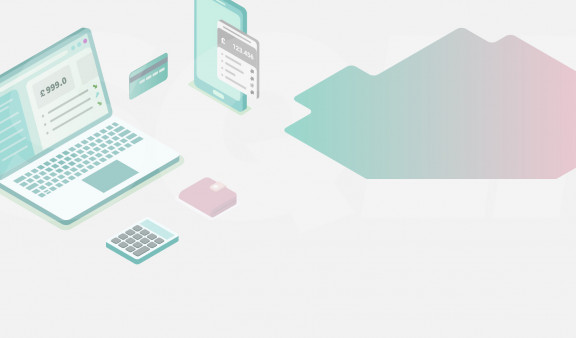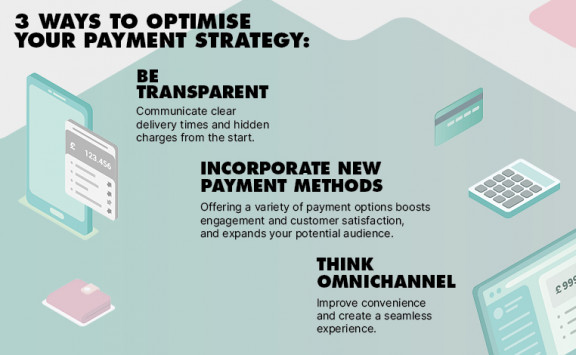
From click to conversion: how to optimise your payment strategy
You’ve got a great product and your digital marketing is on point. But why isn’t all this traffic getting you the sales it should?
According to Statista, almost 70 per cent of digital shopping baskets globally were abandoned without completing the purchase in 2021. In the UK, the last three months of 2022 saw 81 per cent of orders on mobile phones not completed – and over seven in 10 carts created left abandoned on computers and tablets as well.
Reasons cited for these abandoned baskets include high shipping costs, long delivery times and lack of preferred payment options.
However, having a seamless checkout is just one part of getting your payment strategy right. Here, SQLI takes a look at some of the key payment pain points retailers should make a priority to improve their sales today.
3 Ways to Get Your Payment Strategy Right and Boost Sales
1. Communicate clear delivery costs and times from the start
Nothing is more frustrating than getting to the final part of the customer journey to find out an item isn’t in stock for several months – or that there are extra shipping costs that weren’t made clear earlier.
A recent survey found 48 per cent of consumers polled had abandoned a shopping cart because they found the extra costs such as shipping and taxes were too high, while 24 per cent said the site had wanted them to make an account and 22 per cent that the delivery time was too slow.
Consumers often want to shop around and compare prices from different retailers before making a choice. When customers can’t find what they need quickly, they are likely to try to find a digital retailer that offers them faster solutions.
Offer your customers quick routes to payment that don’t involve lengthy sign-up processes and show delivery times and prices on the product information page to prevent customers discovering these things further down the line for the first time.
The more transparent you are and the more seamless the customer journey, the more a customer is likely to return.
2. Incorporate new payment methods
Like digital in general, the number of consumers using digital wallets grew during the pandemic and has shown no signs of slowing down.
Add a bank card to the digital wallet on your smart phone and you can use your phone to pay. If you have facial recognition, you also have an extra layer of security – and you don’t need to carry your card around.
As of December 2022, 53 per cent of stores and restaurants accepted Apple Pay in the US, with 28 per cent of online stores. In France this figure is 62 per cent and 18 per cent respectively. Of course, Apple Pay is just one solution, with PayPal, Google Pay and Amazon Pay among others now serving millions globally.
In the UK, one in three (33.9%) UK consumers now have a digital wallet, but this rises to two thirds (64%) among 18-34-year-olds.
Take this a step further and brands such as Starbucks have their own digital option consumers can add to the wallet that acts like a bank card. Use this at branches and you can build up a whole host of benefits and receive money off purchases.
In the age of convenience and fast fads and with digital wallets becoming more popular with Gen Z and Millennials, digital retailers must ensure they keep on top of – and incorporate - the latest payment methods into their solutions to ensure they don’t miss out on sales.
3. Think ‘omnichannel’ to make the most of your payment strategy
The lines between digital and bricks and mortar are blurring all the time and your payment strategy must reflect this.
Customers expect to be able to slip fluidly from one to the other and across all channels and devices with ease.
Many brands, such as Screwfix have made click and collect a key part of their business. If a customer needs something quicker than delivery allows, they still have an option to buy online – but pick up in store. Many brands such as John Lewis and Ikea are now opening up extra pick-up hubs in other stores, bring an extra layer of convenience to their customers.
However, omnichannel has grown to mean so much more now. Are you mobile friendly? Are you offering customers the chance to buy straight from social feeds? Just how joined up are the online and off-line experiences – can a customer buy online and pick up in-store, or buy in-store and have something delivered if not in-stock? Can they move seamlessly from channel to channel using just one basket?
Don’t neglect your payment strategy
With such complex digital solutions today, it can be easy to push your payment strategy well down the list in terms of importance. However, there are many changes you can make to your platform that are not difficult to implement and can lead to increases sales in the long term. Others, such as building a click and collect option into your business, will take more planning, but are now fast becoming an integral piece of the digital jigsaw.
For today, think:
- Be transparent. Make it clear how long delivery times are likely to be and of any hidden charges early on in the customer journey. Customers are more likely to return to your digital store, the better their experience has been.
- Incorporate new payment methods. Do you allow customers to use Apple Pay and other digital wallet solutions? Can you turn your social media feeds into another store front? Giving consumers the choice of how and when they pay will bring more engagement and customer satisfaction - and help you reach the broadest potential target audience possible.
- Think Omnichannel! Can customers move between bricks and mortar and online - and between channels, easily? Can you implement click and collect into your business strategy? Convenience and a seamless experience are key.



